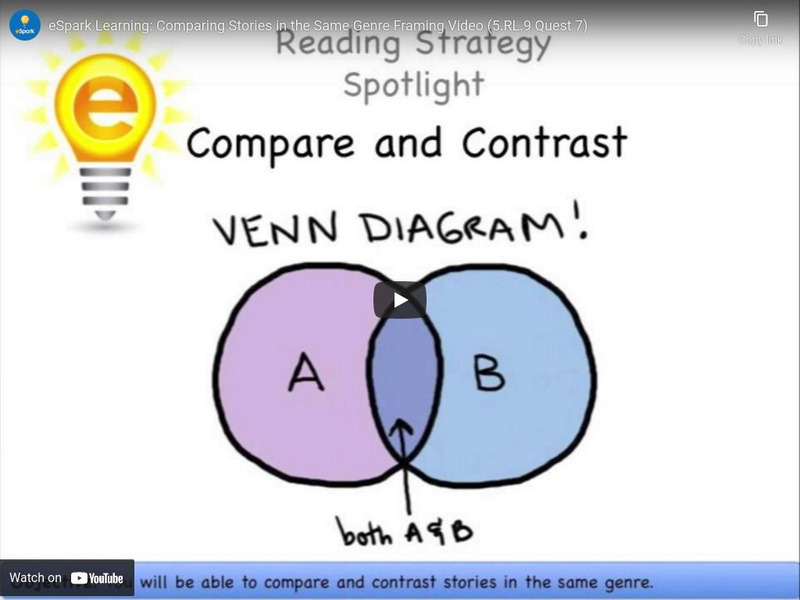Townsend Press
Relationships I
Transition words can be a very important addition to any writer's toolbox. Learn more about addition words and time words, and how they can enhance the organization of any writing passage, with an informative video about reading...
Townsend Press
Relationships II
Cause and effect, problem and solution, compare and contrast, illustration and example -- your class has undoubtedly seen these essay structures before. But how are they related? Watch a reading video about the ways relationships between...
Imagine Learning Classroom
Learn Zillion: Compare and Contrast Elements Within a Text
In this lesson, you will learn how to compare the remaining elements by listing similarities in a table. [5:34]
Imagine Learning Classroom
Learn Zillion: Organize Ideas and Evidence for Responding to Constructed Response
In this lesson, you will learn how to organize your evidence by writing supporting paragraphs. [5:31]
Imagine Learning Classroom
Learn Zillion: Analyze a Text's Structure
In this lesson, you will learn to organize information by using text structure clues. Login gives access to an additional video. [4:42]
Imagine Learning Classroom
Learn Zillion: Determining Author's Purpose
In this lesson, you will learn to understand an author's purpose by thinking about why the author chose to write in a particular text structure. Login gives access to an additional video. [4:22]
eSpark Learning
E Spark Learning: Comparing Stories in the Same Genre Framing Video (5.Rl.9)
Explains how to compare stories within the same genre for their similarities and differences and how this skill will benefit one as a reader. This video introduces a followup activity where students would compare two fables and two...
Other
Flocabulary: The 5 Types of Text Structure
How do authors organize the texts they write? This musical video teaches five common text structures used in informational and nonfiction text: description, sequence, cause and effect, compare and contrast, and problem and solution. [3:49]







